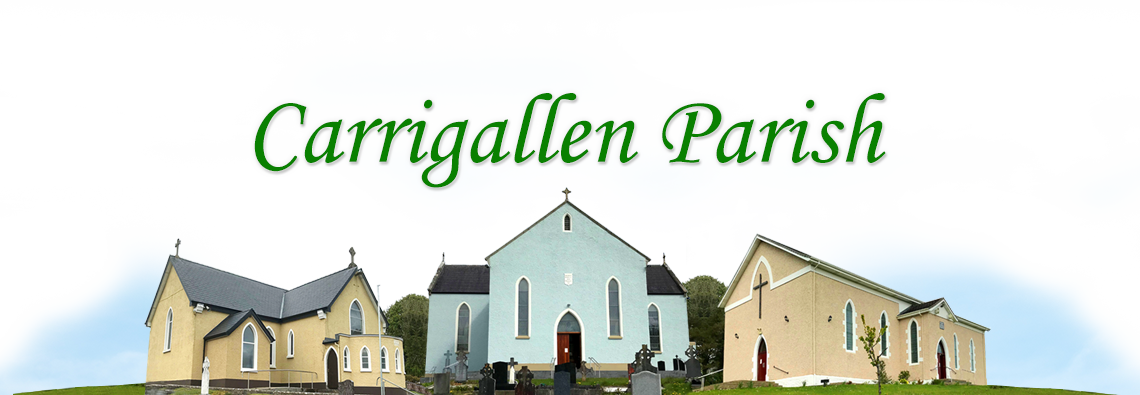Report on the Responses from Parish Meetings of Autumn 2023

REPORT ON RESPONSES FROM PARISH MEETINGS IN RESPECT OF BISHOP HAYES’ PASTORAL LETTER 2023
Background
In Autumn 2023, Bishop Martin Hayes published his Pastoral Letter ‘Making Decisions and Preparing for the Future Together’. Parishes were then asked to hold meetings and discuss three key questions emerging from this the Pastoral Letter, which would help the Diocese plan for the times ahead.
The questions were:
- Since Priests are fewer and getting older, what are my fears or concerns about our faith in the future?
- A training Programme is being prepared for Lay Pastoral Workers. What kind of skills and tasks should this focus on?
- What preparations do we need to put in place, in conjunction with our neighbouring parishes, if we have less Masses and the possibility of no resident priest?
Following these Parish meetings, local Facilitators and note-takers assimilated the information. A summary of this feedback was read out at the weekend Masses for all parishioners and then the full report was sent to the Diocesan Offices. Reports were received from meetings in nearly all the parishes which involved the participation of over 2,000 people. In addition, over 100 individual submissions were received from comment boxes in Churches and posted in to the Offices.
Following the drawing up of a draft document by the Diocesan team, Zoom meetings were subsequently held with facilitators from 15 of these parishes to explore the patterns emerging from the reports. What follows was written in the light of the Parish reports and the follow-up consultation with facilitators with accompanying supporting quotations from participants.
Parish Facilitators were asked to note the ‘mood or colour’ that they felt would be fitting to describe their meeting. The colour choices were as follows:
- Green – good energy and sense of the future as a parish
- Orange – Somewhat fragile and uncertain, but with some hope – would need strong support
- Red – despondent about situation, resistant to change, sees no future without resident priest.
The ‘colour’ of the meetings was described as green to orange, with no red. Overall this indicated an anxiety about huge challenges facing the parishes, but also a readiness to engage with these, and some level of confidence that parish communities can survive without resident priests, given certain levels of support. The profile of attendees was consistent across the diocese – they were mainly older and regular Mass goers. But given that, the message was not conservative. There was an openness to change, a sense of urgency about what needs to happen, and above all a sense of the need to engage with the absent young people.
1. Response to Bishop Martin’s Letter
The message was real. It was welcome. It contained no surprises. The issues it raises are urgent and there is a need for an urgent response now.
- ‘Not surprised, interested to see the hard facts, saddened by the situation we find ourselves in’
- ‘The general feeling was that Parishioners have known this was coming. Harsh realities but high time we face up to them’
- ‘ …the invitation to engage in consultation to assist planning is welcome’
2. Reduction in Priest Numbers
The core concern raised in relation to the decline in the number of priests was what this is a symptom of – a shift in the religious culture in our communities, one impacting most of all on young people. They weren’t present at our meetings for the most part; they don’t come to our Masses. They have largely disconnected from church. There was a sense that while we can manage into the future with a reduction in priests, we can’t manage without the young. We need to engage with them.
- ‘No faith role models for the young, leading to a disconnect between the generations’
- ‘Ask young people why they are not going to Mass, what do we need to do to encourage them back’
Side by side with this focus on youth there was also a strong concern for the elderly. In the past the role of the priest in such matters as visitation, pastoral care, and last rites has been a hugely important part of people’s lives in the face of illness and mortality. It’s loss now will be greatly felt by many.
- ‘The sick want to be comforted by a Priest when dying’
There was also concern for the impact on parish identity if there is no local priest and no regular Mass. This covered a wide area, including the maintenance of the physical church buildings, the loss of parish income, the loss of the priest as spiritual leader, the loss of community gatherings for weekly Mass. It also the included fears for the loss of key parish and family moments such as baptisms, weddings, funerals, first communions, confirmations.
There was an openness to priests coming in from abroad, given some cultural orientation. There was a desire for the promotion of vocations and an openness to women and married men in the roles of deacon and priest.
3. The Role of Lay People
There was very strong affirmation for developing a role for lay people, both men and women.
Key skills required would be people skills – listening, communicating, organising, training. A pastoral worker should not replace the role of local volunteers but should build their engagement.
Key tasks range across a wide spectrum: pastoral care for sick and elderly; faith work with youth; leadership in prayer and liturgy, administration.
A strong point here was that there needs to be clear communication from the diocese now on how this matter will be developed. This includes clarity on roles for lay people in the parishes – how these will be promoted, what vetting will be done, what training will be offered, what conditions for volunteering, what conditions for paid employment. In this there was an emphasis on accessibility of training, both geographically and academically.
- ‘Parishioners felt guidance was needed from hierarchy as to what roles lay people could take on’
- ‘The course would need to be more centralised rather than based out of Maynooth, some of the training would need to be online to make it more accessible’
- ‘Who will cover the cost of the training programme?’
- ‘We don’t know enough about the difference between a Pastoral role versus a lay role’
4. Weekend Masses
Overall, there was acceptance that the numbers of Masses will need to be reduced. This should be done fairly across the diocese, involving cooperation between neighbouring church communities and parishes, including neighbouring parishes in neighbouring dioceses. It also came across very strongly in the feedback the importance of clear communication so that all parishioners know the times of Masses in adjoining parishes, the priest who is on duty and the possibility of joint newsletters.
- ‘Enrich the Masses – greater attendance is required so there can be a choir, readers, Ministers available. Fewer Masses could mean more people coming to one central church on a Saturday evening or Sunday morning’
- ‘That each parish would have a good committee and co-ordinator who would communicate with neighbouring parishes Mass times and church activities’
- ‘Organising transport for those who have none should they wish to attend Mass’
- ‘Conversations between Churches to work out the practical changes around the schedule of Masses must be fair, equal and considerate to all communities at weekly Mass’
There was a desire that church buildings should not be closed. This indicated a preference for local liturgies rather than travelling to neighbouring parishes. Here there was an openness to lay led liturgies when Mass is not possible. There was also an openness to the use of technology for Mass, as during the Covid period.
- ‘Livestream Mass from one Church to the other Churches and have a Minister of the Eucharist present in each Church’
- ‘We need to make sure and continue to encourage parishioners to support their own parish’
- ‘Churches can’t be left with closed doors, they need to be open and maintained’
- ‘Have a prayer service on a Saturday instead of a Priest having to say Mass’
